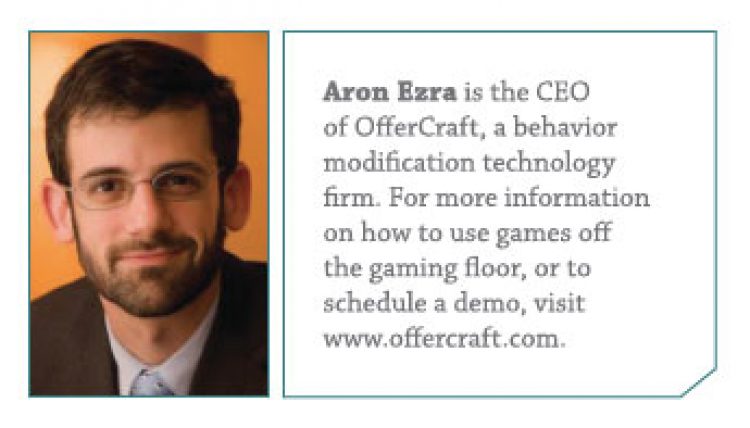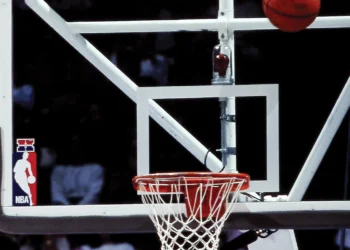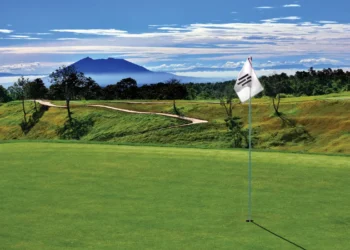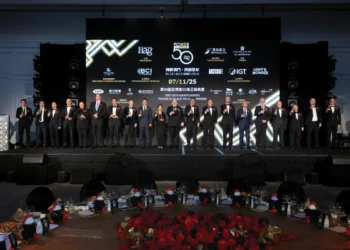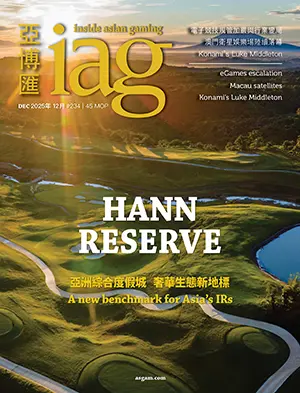Casinos are in the business of creating unforgettable experiences. Our patrons are whisked into a world where anything can happen, where time stops, chandeliers and cocktail glasses sparkle, and the outside world melts away.
By Aron Ezra
Our industry is incredibly good at getting people in the door. And yet… we’re always wondering if we could do better. Why don’t we have a larger share of wallet? Why don’t more restaurant guests convert to loyal players or vice versa? How do we get more of an edge on the competition?
I’ve spent years helping casino marketing teams use technology to craft more effective incentives for guests. Over that time I’ve seen a lot of reasons why marketing offers underperform—below are my observations about the three biggest reasons why incentives fail.
Mistake #1: The offer isn’t what the customer wants. Deciphering what your players want is no easy task. Netflix and Amazon, with their sophisticated recommendation engines, have mastered the art of delivering personalized web experiences tailored to the specific needs and habits of each individual customer, and casinos (like just about every other business) are trying to duplicate their success.
Unfortunately, a huge number of casino executives tell me that they have a treasure trove of data but aren’t doing a good job of analyzing it. As one skilled marketer told me recently, “We’re still pretty darn far from unlocking those magic insights that everyone keeps promising us.”
Casino marketers, of course, are not alone. Analytics is a weakness in many digital marketing programs. In one recent study,
37 percent of companies reported that they desperately needed marketers with better data chops. Good data analytics tools aren’t cheap or easy to use; without skilled staff they can end up sitting underutilized or ignored.
The easiest way to make sure an offer is redeemed is to make it bigger. But what’s the right size to get the players in the door without giving away too much? If you offered every guest $1 million for showing up, you’d get close to a 100 percent redemption rate. The challenge is to create offers that are compelling to each individual without breaking the bank.
One of the really fun things about running a technology business is that you can build solutions to address issues like this. So I asked my engineers to build a tool to deploy dynamic, interactive rewards that can change even after you distribute them. One such dynamic reward allows a player to swap out the initial reward for a new one that is more appealing. This helps in three ways:
• It gives you valuable market research data about the reward preferences of that individual;
• It reduces the glut of outstanding offers—instead of building up a lot of unused offers, you can keep adjusting the original one; and
• People get to choose their own reward, which dramatically increases the likelihood that they will redeem it.
Instead of trying to guess what a player wants, this allows your players to tell you what they want.
Mistake #2: The offer is what the customer wants, but it seems like too much hassle or doesn’t seem worth the effort to redeem it. Even when we offer a prize our customers want, too often we make them jump through unnecessary hoops to claim it. Just like most people don’t bother bending over to pick up a penny, most customers won’t bother clipping a coupon or mailing in a redemption card if it doesn’t seem worth the effort.
Some marketers count this as a victory. The player gave up what the casino wanted (signing up for the Players Club, enrolling in a newsletter, filling a survey), and the casino doesn’t even have to pay out the reward. Fooled ‘em!
While this may work for businesses that have infrequent customers, like furniture retailers or car dealers, casinos want frequent contact with their guests. Those customers get genuinely frustrated if you introduce unnecessary hurdles.
Sometimes redemption isn’t a hassle, but the prize is just too inconsequential to bother redeeming. One casino I worked with was trying to convince guests to drive 200 miles to their casino—by tempting them with a 50 percent discount off a drink. It didn’t do the trick.
Mistake #3: The offer is appealing and it seems easy to redeem… but the player forgets about it. You create a personalized incentive that your players like, but still they don’t redeem it. What’s going on?
We’re all busy and bombarded by pitches; researchers estimate the average person sees anywhere between several hundred to several thousand advertising pitches each day. So it’s no wonder we often forget to hand the server our coupon even though it’s in our pocket. We forget to bring the two-for-one offer to the box office even though it was clipped to the refrigerator.
It’s one thing to win a prize, but another thing entirely to claim it. Psychologists have spent years studying how to motivate behavior change. And smart marketers are starting to leverage these insights in their incentives programs.
It’s critical that when the offer is given you make it memorable. There are many ways to accomplish this, but we have found that one of the best approaches is to distribute your offer in a fun way, such as via a game or unique experience.
The key in all of this is to engage your customer emotionally. Give them what they want, make it easy to redeem, and nudge them to redeem it. That’s the best way, backed by science, to create lifelong loyalty—and lasting profits.
Reprinted with permission of Casino Journal.






